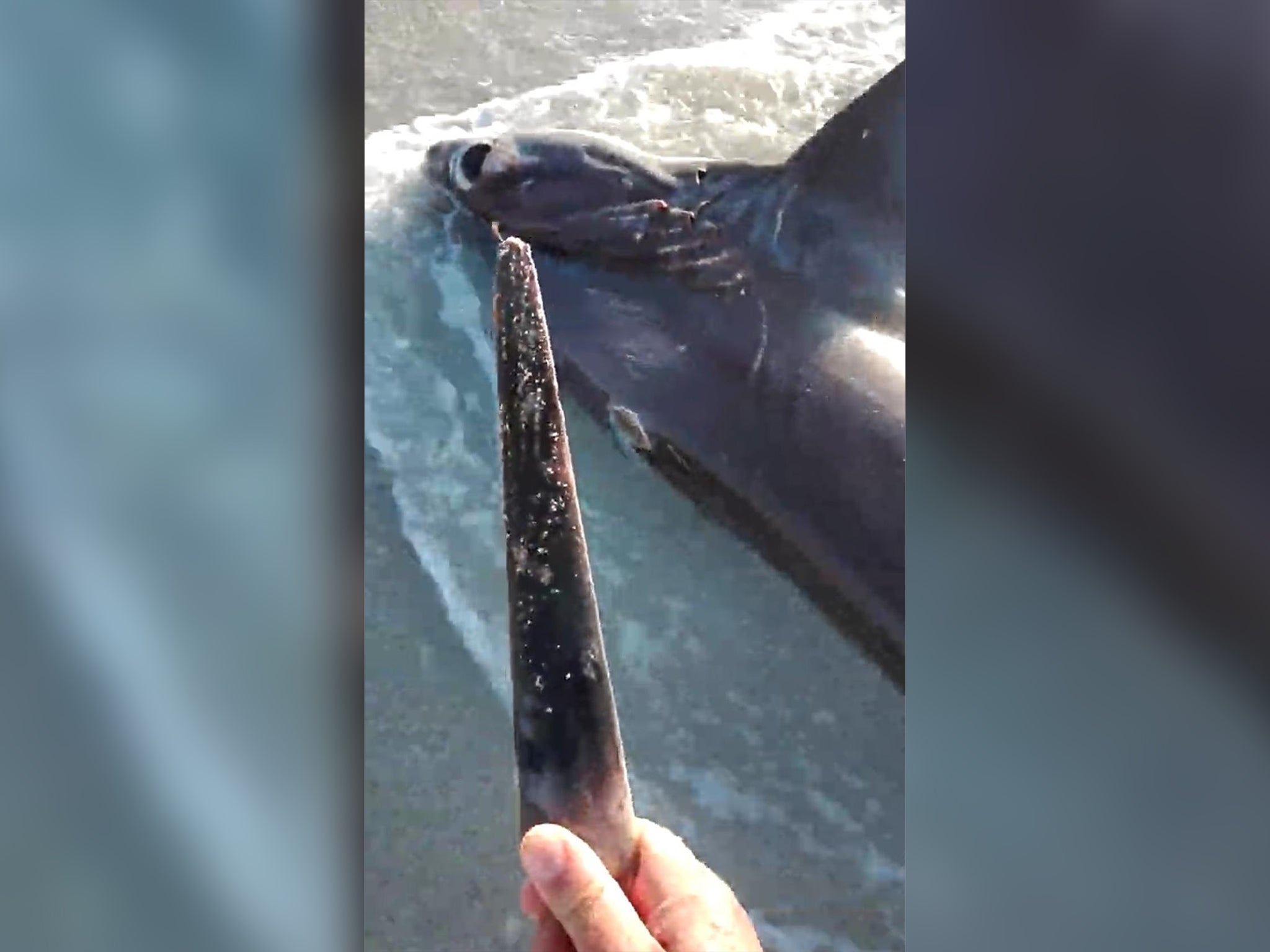The Independent's journalism is supported by our readers. When you purchase through links on our site, we may earn commission.
Shark washes up on beach after being stabbed by swordfish
Attacker may have been trying to secure food in a high-competition environment, scientists suggest

Your support helps us to tell the story
From reproductive rights to climate change to Big Tech, The Independent is on the ground when the story is developing. Whether it's investigating the financials of Elon Musk's pro-Trump PAC or producing our latest documentary, 'The A Word', which shines a light on the American women fighting for reproductive rights, we know how important it is to parse out the facts from the messaging.
At such a critical moment in US history, we need reporters on the ground. Your donation allows us to keep sending journalists to speak to both sides of the story.
The Independent is trusted by Americans across the entire political spectrum. And unlike many other quality news outlets, we choose not to lock Americans out of our reporting and analysis with paywalls. We believe quality journalism should be available to everyone, paid for by those who can afford it.
Your support makes all the difference.Scientists are investigating a fatal shark attack — but not the kind you might expect.
After a huge female thresher shark washed up dead on a Libyan beach earlier this year, researchers have been trying to understand why its killer may have struck.
The 4.5m shark was impaled by a swordfish’s blade, which penetrated behind its head and likely damaged or severed major nerves and blood vessels, they wrote this month in the journal Icthyological Research.
The grisly scene was uncovered by citizen scientists in April. Images show a roughly 1ft length of the swordfish blade, known as a rostrum, had broken off in the shark; researchers estimated the attacking swordfish to have been about 3m long.
They wrote that although impalements by swordfish were “not uncommon”, the phenomenon was not fully understood. While spearings of inanimate objects are usually written off as accidents, the authors said there was growing evidence that swordfish used their fearsome bills as weapons.
A similar shark killing took place in Valencia, eastern Spain, in 2016 and another six have been recorded since then, according to a report by The New York Times.
They added: “Although swordfish bills are thought to have important hydrodynamic and feeding-related functions and their breaking could be seriously disadvantageous for swordfish, it was reported that individual billfishes with damaged, malformed, or even missing rostra were apparently still in good physical shape, leaving room for speculation if swordfish experience a trade-off between averting a threat and the potential impairment of high-speed locomotion.”
There have also been several relatively recent reports of apparently defensive impalements involving juvenile swordfish being preyed upon by sharks — though that was not the case here, given the size of the aggressor animal.
The authors of the paper said it was not possible to explain the circumstances of this incident definitively. The swordfish may have speared the thresher shark by accident, but equally it might be that it was trying to drive a competitor away from a food source.
They wrote: "We hypothesise based on the results presented here (similar size and ecology of both species, direction of trauma infliction) that competition could be a driving force for swordfish attacks on sharks or other possible competitors.
“However, due to the fact that the protagonists are pelagic species and lethal interactions may usually remain undetected, more data is needed to unambiguously support this interpretation and we therefore encourage future studies on stranded sharks to conduct necroscopies and thoroughly search for evidence of swordfish interactions.”

Join our commenting forum
Join thought-provoking conversations, follow other Independent readers and see their replies
Comments